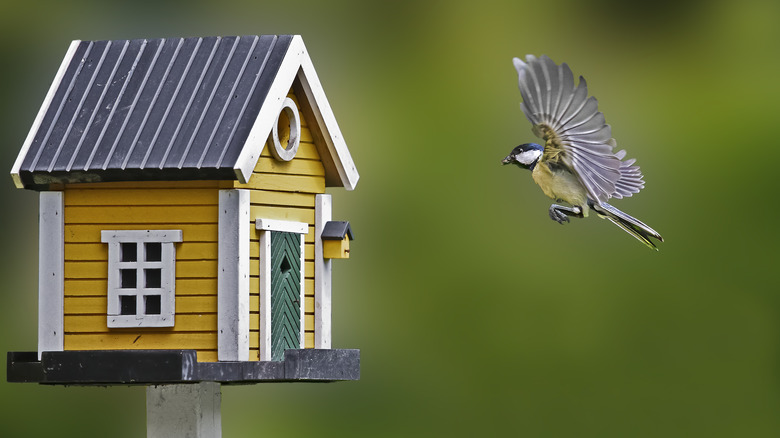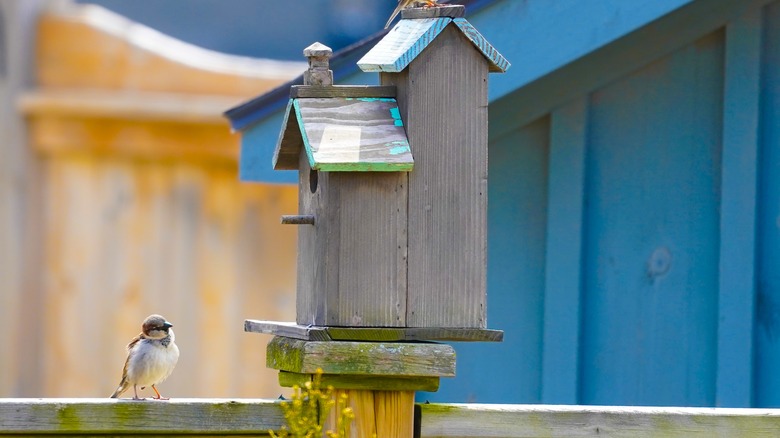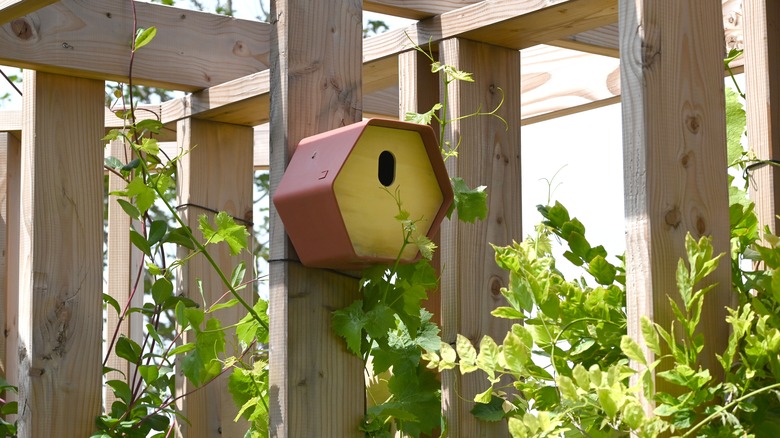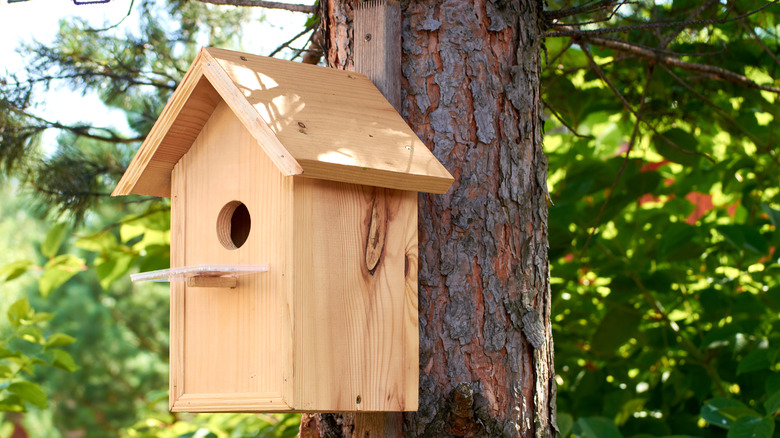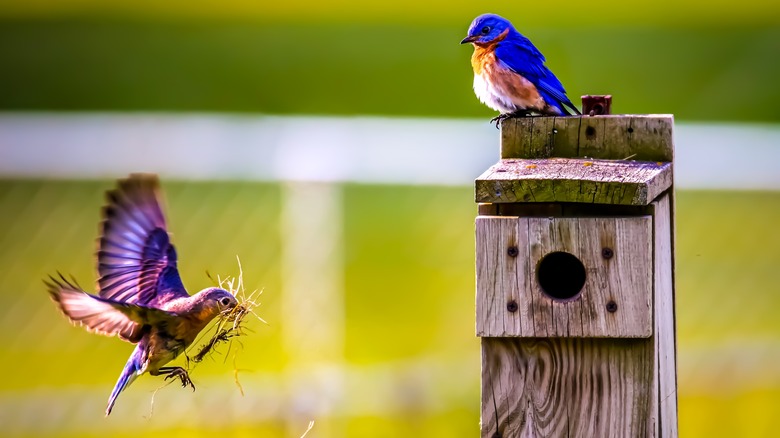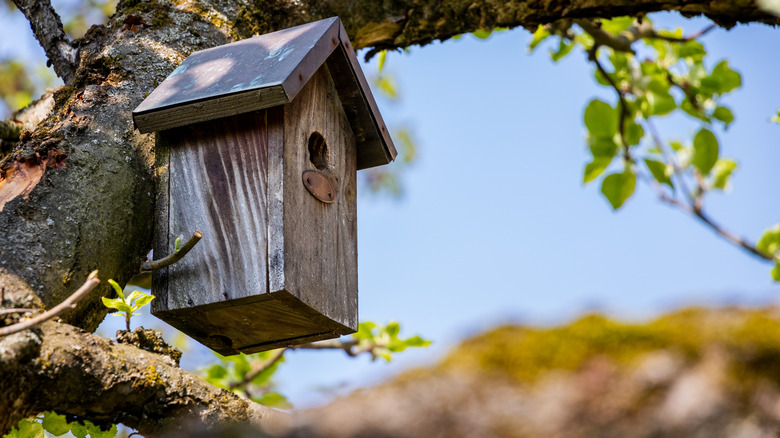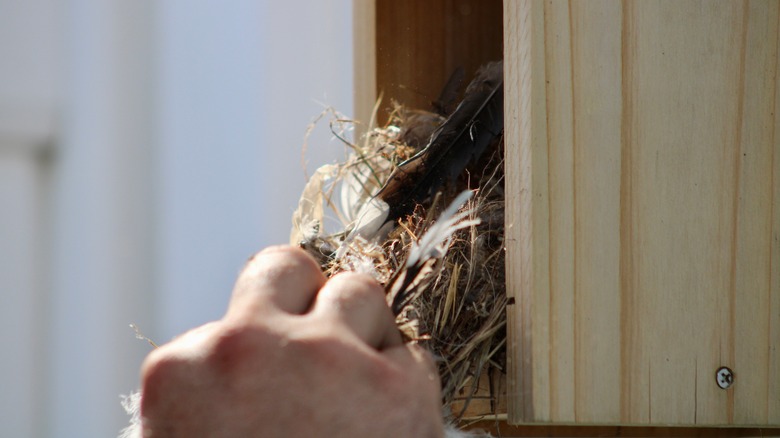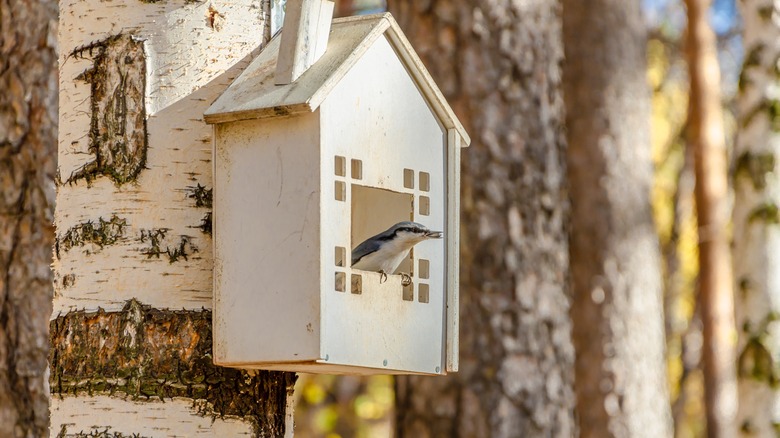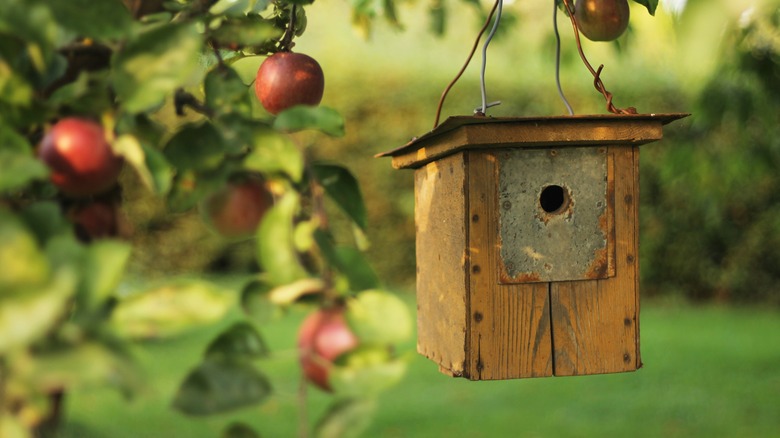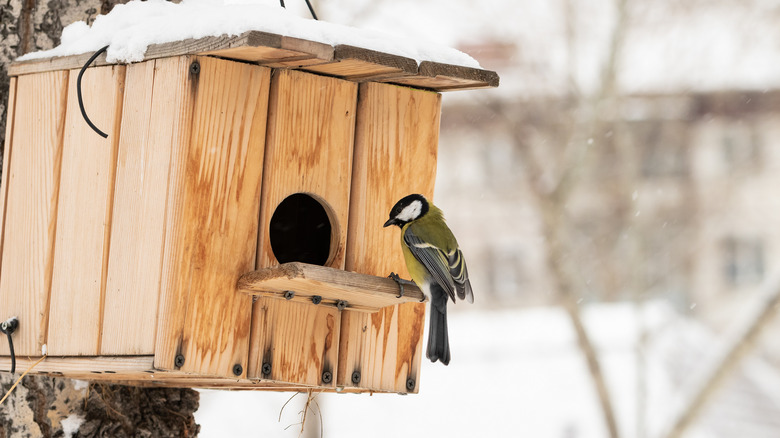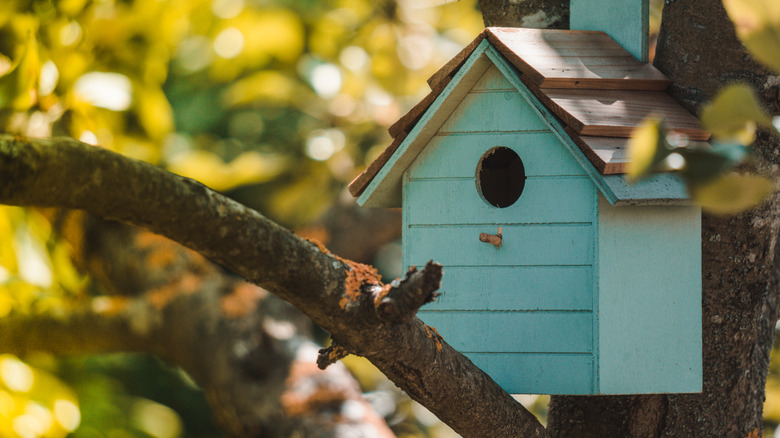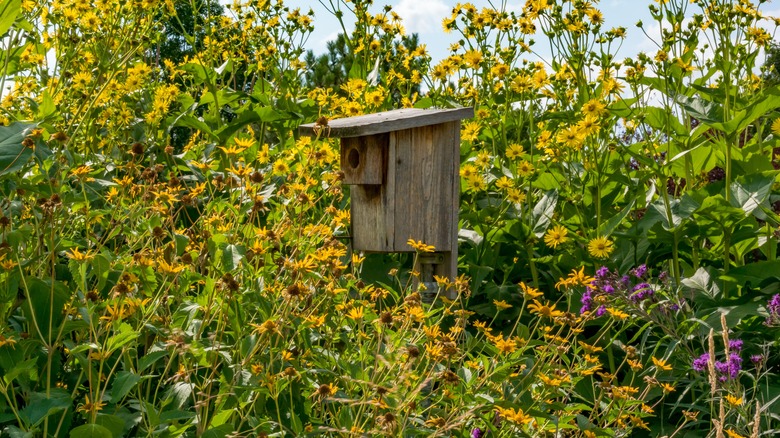Choose The Best Type Of Birdhouse For Your Yard With These Helpful Tips
Attracting birds to your yard is a fun way to add more life and movement to the space, and choosing the right birdhouse plays a massive role in how successful you'll be. Picking one out requires more than just going into your local store and grabbing the first one you see. Instead, you want one that suits your yard's conditions to keep the birds comfortable and coming back. Because of this, its effectiveness will be based on considerations beyond simple aesthetics. You must consider your local bird species, climate, and yard characteristics.
Luckily, you can use several actionable tips and strategies to ensure you choose a birdhouse that blends with your yard and is a lure for the local birds. For example, if you live in a hot climate, your birdhouse might need to be made out of lightweight, breathable materials so the structure doesn't overheat. Or if you get a lot of predators lurking around your yard, you will want to choose a house that has some built-in protection. By learning all of these things, you'll make the perfect choice that can attract a thriving bird population to your garden.
Balance yard size and birdhouse scale
To find the best birdhouse size for your yard, start by measuring the yard to get the overall size and understanding of the layout and dimensions. Create a rough sketch that includes key features in the space, such as trees, shrubbery, and existing structures. This sketch will help you visualize where the birdhouse could fit and how it should scale to blend with these elements. Compare the proposed birdhouse size against existing yard elements like garden furniture, trees, and decorative features to ensure it complements their scale. For example, if you have chunky, boxy furniture, you can go with a more substantial birdhouse. But if you have light and airy furniture, a daintier model would match the proportions better. The same rule applies to yard size. For larger yards, consider a slightly bigger birdhouse or a series of birdhouses to create a seamless look. In more compact spaces, go for a smaller, more discreet structure to avoid overwhelming the yard.
It's important to pick the right size birdhouse for both practical and aesthetic reasons. From a practical standpoint, the proper size enhances the birds' security and well-being, which encourages them to build nests and return year after year. Additionally, a birdhouse that complements the scale of the yard creates a unified appearance and adds to the garden's overall style and atmosphere.
Match your yard's aesthetic
Your birdhouse isn't just functional; it's a chance for you to add personality and style to your yard. When you pick your birdhouse, note which colors you see primarily in your outdoor space or garden. Do you have a host of colorful flowers? Have your house copy that color palette. Just make sure not to go too bright since our feathered friends avoid overly saturated colors since they can attract predators. Is your yard mostly comprised of green shrubbery and trees? Go for something more natural and wooden that will blend in with the unfussy landscaping. Maybe you have outdoor furniture or decorations that follow a specific theme? Let your house mirror that same color palette. If you get a birdhouse that matches the existing colors, you get a cohesive look to enhance your yard's aesthetic appeal.
But colors aren't the only thing you should keep an eye out for. You also want the house's shape and structure to match your yard's vibe. For example, if you're going for an English cottage aesthetic in your yard and have climbing ivy and delicate roses, choose a house that mimics a cozy cottage. But if you have modern CB2 furniture decorating your patio, consider getting a sleek black-and-white one that mirrors that contemporary style.
Choose durable materials to withstand your climate
The material choice for your birdhouse is critical, especially considering the weather conditions it'll get exposed to. If you live in a climate with a lot of rain, you'll want natural water-resistant materials like cedar, cypress, or mahogany over less dense woods like pine or fir. Choosing these prevents warping, swelling, and mold growth. You also want to make sure the screws are galvanized in these sorts of climates, which won't rust as quickly and will keep your birdhouse intact for longer. Also, choosing a model with a pitched roof overhang protects the birdhouse by shielding the entrance and interior from direct rain or snowfall.
Do you live in an area with loads of bugs or perhaps fungus issues? In that case, you want to go with a redwood house, which is naturally resistant to these issues thanks to the tannins in the wood. That means you might not get many termites sniffing around your birdhouse, even if your neighborhood has problems with them. If you live in a hot and humid climate, then you should especially avoid plastic or metal birdhouses. While they aren't recommended in general, they are especially dangerous in backyards that see temperatures that consistently reach triple digits since they can overheat the birds and eggs inside. Picking a birdhouse designed with your climate in mind ensures it can withstand your environment, giving your birds a safe space to stay.
Design the birdhouse to attract local bird species
To tailor your birdhouse design to your yard, you also need to tailor it to your local bird species. To do so, you first need to figure out which birds live in your area using birdwatching guides or local wildlife resources, like downloading and using the National Audubon Bird Guide App. Focus on species that are common to your yard or neighborhood. After figuring out which native birds you can attract, customize the birdhouse to meet their specific needs. This includes choosing the right entrance hole size, which varies by species to ensure the bird can enter but predators cannot. These hole sizes give you an opportunity to target certain birds while deterring others that could compete for nesting sites or be predatory. For example, wrens like entrance holes that are no bigger than 1 1/4 inches, but that is much too small for sparrows. You can also research whether or not your birds like to have already nesting materials set up inside. For example, you'll be much more likely to attract bluebirds if the box is already filled with straw or twigs.
Designing a birdhouse with specific local bird species in mind significantly enhances your yard's appeal to these birds and draws them in. By offering a nesting place that meets their unique requirements for safety, size, and style, you increase the likelihood of them taking up residence. A well-designed birdhouse becomes more than just a decorative yard feature; it serves as a functional habitat for birds, encouraging biodiversity in your outdoor space.
Place the birdhouse at the correct height for the landscape
When you're deciding the best place to install your birdhouse, the height you want to put it at influences how successful you are at attracting birds. You have to consider the natural nesting habits of your local birds and your landscape's specific features. Many species require certain heights when they build their nests, and the environmental conditions and local predators will influence them. For example, swallows like to nest 10 to 20 feet off the ground. If you don't have a tree or pole that high in your backyard, then you know you won't be able to attract these specific birds, which means you have to choose a birdhouse that attracts a different kind of local bird to your backyard. This can then alter everything from the entry hole size to what materials you include inside.
Birds pick nesting sites based on which area gives their babies the best chances for survival, and height is critical. Putting the birdhouse at the correct height mimics the birds' natural nesting sites, making it more likely they'll use it. The right height also goes a long way in deterring ground-based predators, making the birds feel secure. So when you're choosing your birdhouse, make sure your yard has the right height conditions to accommodate your chosen birds. If it doesn't, you'll have to change your plans and the look of your house.
Make the birdhouse easy to maintain
To ensure your birdhouse is both easy to maintain and appealing, pick a design that allows for easy access for cleaning and inspection. Look for birdhouses with removable roofs or sides that easily open, allowing you to get rid of old nesting materials and any debris. Position the birdhouse in your yard so it's easily reachable for maintenance without disturbing the birds, like in shrubbery or a lower branch of one of your trees. Incorporating these features into your design ensures it is attractive and functional, enhancing the overall look of your yard while promoting the visiting birds' health and safety.
An easily maintainable birdhouse is crucial for retaining local bird species in your yard. Clean it at least once a year or after each brood leaves the nest, which will prevent bacteria or mold from building up and harming future nestlings. It also allows you to get the birdhouse ready for the next breeding season, increasing its occupancy rate. A well-maintained birdhouse supports the well-being of local wildlife and serves as a focal point in your garden, contributing to its aesthetic appeal.
Ensure good ventilation if you have an overly sunny yard
Your birdhouse needs good ventilation, especially if your yard gets a lot of direct sunlight for hours every day. Birdhouses that get exposed to direct light can overheat, and this makes it unsafe for nesting birds. To lower this risk, look for designs with lots of ventilation slots or holes near the top of the birdhouse. These holes let hot air escape, encourage air circulation, and drop the internal temperatures. The birdhouse's color also impacts the temperature; lighter colors reflect more sunlight and lower heat absorption. Because of this, avoid stylish black or charcoal gray houses if you live in a hot area or have a yard with lots of direct light.
Having adequate ventilation in your birdhouse goes beyond being a comfort feature; it's critical for your nesting birds' well-being and safety. In areas with a lot of sun, the temperatures inside get hot enough to lead to fatal conditions for the young birds and eggs. Ventilation helps regulate this temperature by not allowing heat to build up and creating stability. Good airflow also reduces the humidity levels inside the birdhouse, stopping mildew growth. Pay close attention to these conditions during the breeding season since the birdhouses are almost constantly in use during this time, and the risk of humidity issues or overheating is at its highest.
Consider a perch-free design if your yard gets predators
Protecting the birdhouse from local predators is critical, especially in yards with a higher local predator population. These predators are all risk factors for your birds, so you need to choose a birdhouse design that deters rather than enables them. This means choosing a design without a perch. Perches can give predators an advantage, especially cats, raccoons, and snakes, because it makes it easier for them to get into the birdhouse. Also, buying houses with predator guards like baffles above or below the house can stop attempts to get into the birdhouse. Also, if you have a snake problem, also consider mounting the structure on a smooth pole like a PVC or galvanized steel pipe.Snakes prefer to climb rough surfaces over smooth, so this deters them.
These designs encourage the birds to use the space by making it safe. If it's harder for the predators to get to the entrance, the eggs and nestlings have a higher chance of survival. In turn, these types of birdhouses can lead to much higher success rates in fledging young birds, helping support the local bird population.
Ensure the birdhouse adapts to the seasons in your region
If you live in an area with varying seasons that have large temperature fluctuations from spring to winter, make sure to pick a birdhouse that can adapt to them. Any birdhouse that can survive all seasons has to have good ventilation during summer but be insulated enough to stay warm during winter. Pick a birdhouse made of natural materials that offer good insulation – like cedar – which will help keep the internal temperatures stable. For winter, your birdhouse has to keep snow and rain out, so choosing a model with waterproof seals around the entrance is a huge help.
A birdhouse that adapts to all seasons gives your local bird population a reliable spot all year round, and this stability will attract a range of bird species. It also supports local wildlife during months when the weather makes their natural nesting spots inhospitable or scarce. By accommodating their seasonal needs, your birdhouse will be a permanent, lively fixture in your yard, offering birds a space to find shelter, breed, and survive.
If your yard gets a lot of wind, choose a house that can be mounted
If your backyard is more open space and is exposed to the winds, you must pick a birdhouse with a secure mounting system. Getting one you can simply hang from a tree branch or pole won't do. Instead, pick a structure with heavy-duty mounting brackets, versatile attachment choices, or deep anchoring stakes that allow you to firmly attach them into place. You can also choose a model that is specifically designed to weather winds. For example, there are houses you can get with wind blockers, such as this Duncraft Bluebird House. These have panels that extend a few inches past the side and top of the house, allowing the birds to fly in or perch without a gust knocking them about.
Windy conditions are a dual threat to your birdhouse because they can both damage it and endanger any birds using the space. Additionally, in extreme instances, if you don't secure your birdhouse well enough, it can get torn away and destroyed. Following these guidelines can keep the structure from getting damaged and ensure that the birds will find it a suitable and safe place to nest.
If your yard is noisy, get a birdhouse with soundproofing
If your yard is a space with frequent or loud noises, picking a birdhouse designed to reduce these disturbances is crucial. Look for birdhouses with sound-dampening features, like thicker walls made from materials like dense wood, which can help absorb sound. An example of this is the Audubon Coppertop Bluebird House. It has thick pine wood walls that can muffle sound once the birds get inside. Installing a birdhouse that incorporates these elements ensures a quieter, more protected environment for nesting birds and blends naturally with your garden's aesthetics.
Birds face increased stress in noisy environments, which can deter them from nesting in your birdhouse. The constant barrage of sound disrupts their communication with mates and chicks, and increases how vulnerable they are to any local predators. A birdhouse with soundproofing features or a structure that provides a buffer against noise helps negate these threats, creating a safe haven for birds. This consideration is especially important in yards near busy streets or those with frequent human activity. A quieter, more secure birdhouse supports the well-being and reproductive success of any birds nesting in it while increasing your chances of observing natural bird behaviors in your garden.
